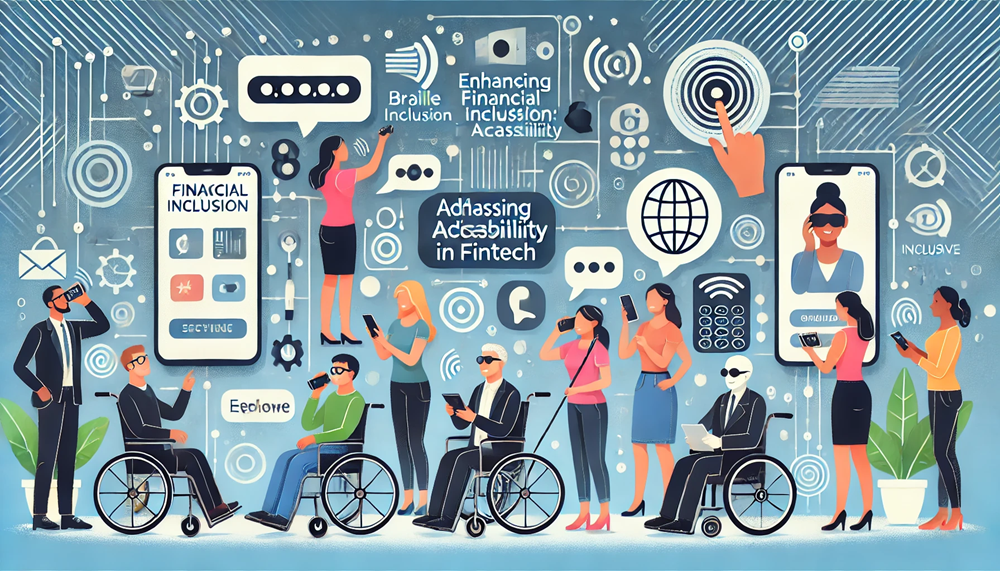Enhancing Financial Inclusion: Addressing Disability and Accessibility in Fintech
The push for financial inclusion has gained significant momentum in recent years, and in 2025, fintech companies are taking major strides to address the needs of people with disabilities. With over 1 billion people globally living with some form of disability, ensuring accessibility in financial services is not just a moral imperative but also a massive market opportunity. The fintech sector has the unique advantage of leveraging technology to create solutions that traditional financial institutions often overlook.
The Accessibility Gap in Fintech
Despite the growth of fintech solutions, many platforms still lack features that cater to individuals with visual, auditory, motor, or cognitive impairments. A study by AbilityNet revealed that 75% of digital banking apps fail to meet basic accessibility standards, leaving millions excluded from essential financial services. This exclusion extends to physical payment systems, such as card readers and ATMs, which are often inaccessible to users with disabilities.
Innovative Accessibility Features in Fintech
To address this gap, fintech companies are introducing a range of solutions designed to enhance accessibility:
- Voice-Controlled Interfaces: AI-powered voice assistants, such as those integrated into Monzo and Revolut apps, allow visually impaired users to manage their accounts and perform transactions without needing to navigate complex interfaces.
- Text-to-Speech Technology: Platforms like PayPal and Stripe are incorporating text-to-speech features to guide users with visual impairments through the payment process.
- Simplified Navigation: Companies like Chime are redesigning their apps with minimalist layouts, larger buttons, and high-contrast color schemes, making them more user-friendly for individuals with cognitive impairments or limited dexterity.
- Braille-Enabled Devices: Payment terminals equipped with Braille keypads and audio prompts are being piloted by companies such as Square, ensuring inclusivity for blind users during in-person transactions.
- Haptic Feedback Technology: This innovation allows users with motor impairments to receive tactile feedback from touchscreens, improving precision during interactions.
Impact of Accessibility on Financial Inclusion
Making fintech platforms accessible has far-reaching benefits:
- Economic Empowerment: Accessible financial tools enable individuals with disabilities to participate more actively in the economy, opening avenues for savings, investments, and entrepreneurship.
- Improved User Retention: Studies show that accessible apps experience higher user satisfaction and loyalty, as they cater to a broader audience.
- Regulatory Compliance: In markets like the US and Europe, accessibility standards are becoming mandatory. Compliance not only avoids legal repercussions but also positions companies as industry leaders.
Fintech Leaders Driving Change
Several fintech companies are setting benchmarks for accessibility:
- Stripe: Stripe’s payment gateway now includes built-in accessibility checks to ensure compliance with global accessibility standards.
- Wise: Formerly TransferWise, the platform has rolled out features like real-time voice prompts and simplified account verification processes.
- Bank of America: While not a fintech startup, its fintech-like app integrates sign-language interpreters for hearing-impaired users, setting an example for the broader industry.
Barriers to Adoption
While progress is being made, challenges remain:
- Cost of Implementation: Developing and maintaining accessible features can be expensive, particularly for smaller startups.
- Lack of Awareness: Many companies underestimate the market potential of inclusive design, viewing accessibility as a compliance issue rather than an opportunity for innovation.
- Technology Gaps: Emerging technologies like AI and machine learning must be trained to accommodate diverse user needs, which requires significant data and testing.
The Future of Accessible Fintech
The future of fintech lies in inclusivity. Governments and advocacy groups are collaborating with companies to ensure accessibility becomes a standard feature rather than an afterthought. Initiatives like The Web Content Accessibility Guidelines (WCAG) are pushing digital platforms to meet universal accessibility standards.
In addition, innovations like neural interface technologies could redefine accessibility by allowing users to control financial platforms through brain-computer interfaces, bypassing physical and sensory limitations altogether.
By addressing the accessibility gap, fintech companies are not only expanding their customer base but also building a more equitable financial ecosystem. This alignment of technology with inclusivity ensures that fintech serves as a catalyst for economic and social empowerment in 2025 and beyond.










